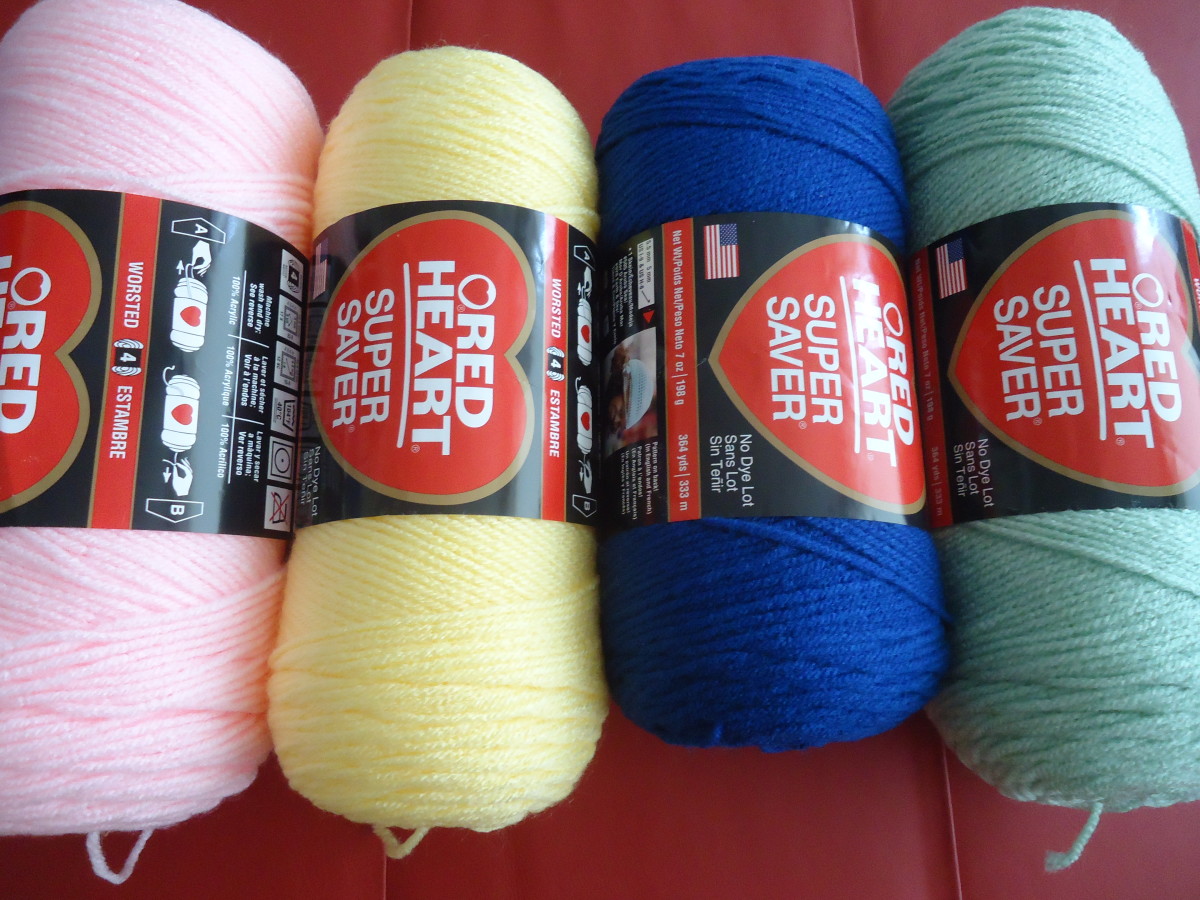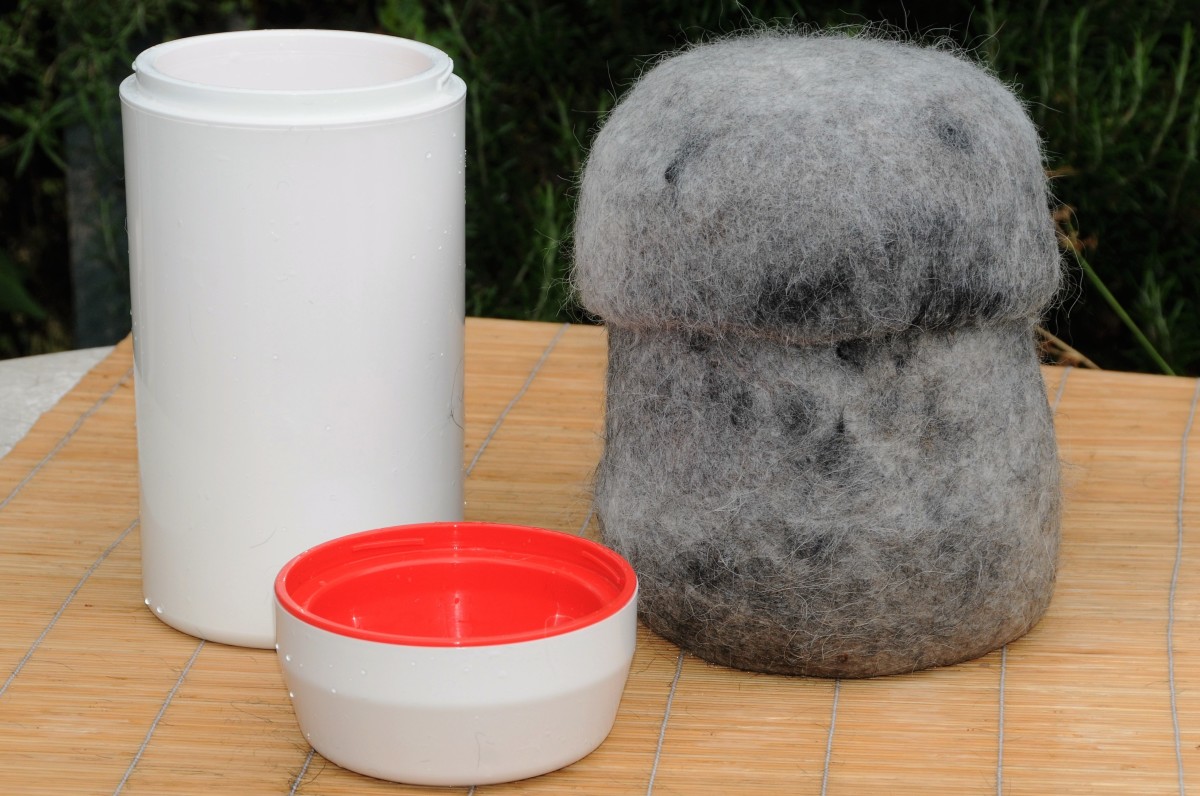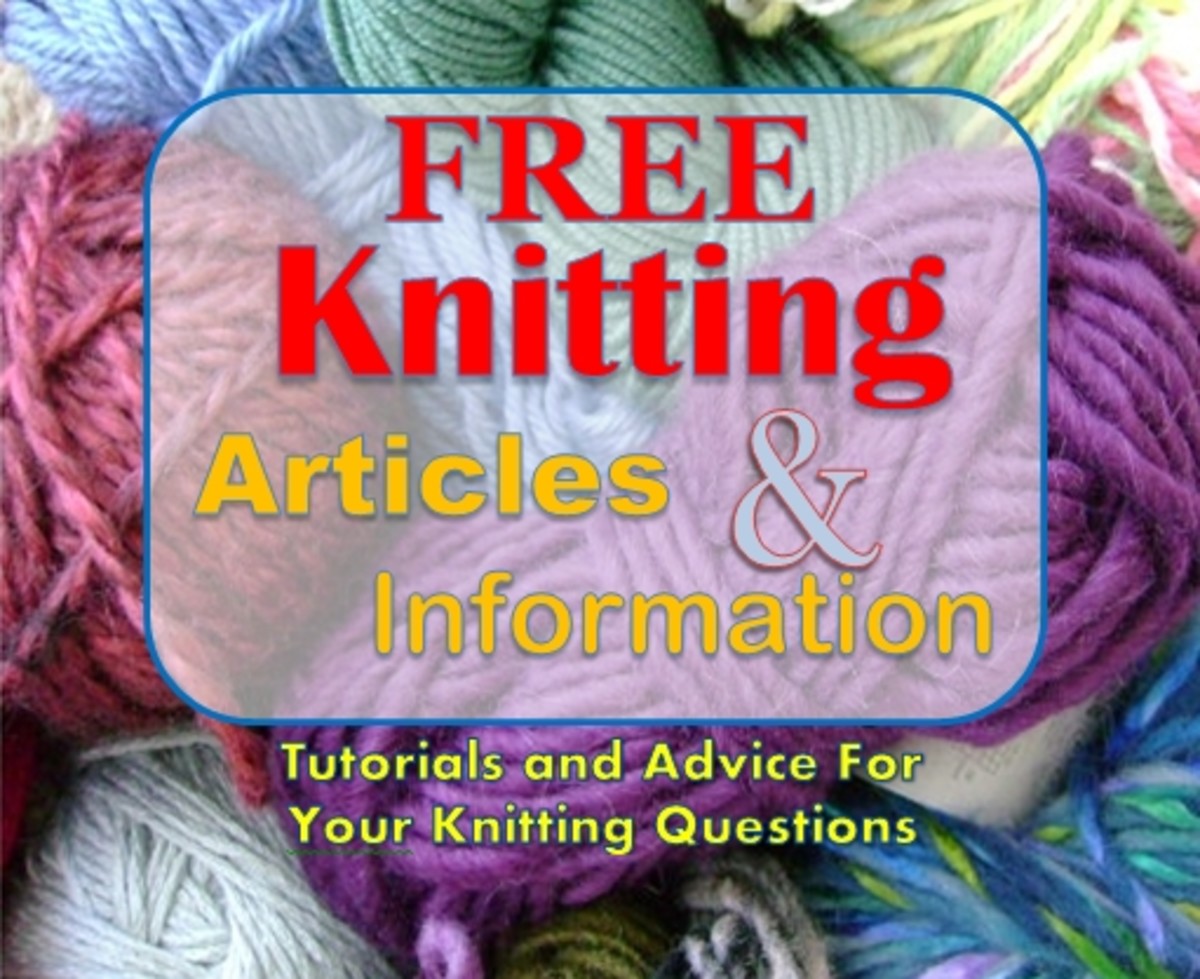- HubPages»
- Arts and Design»
- Crafts & Handiwork»
- Textiles»
- Knitting
Natural Yarns vs Synthetic Yarns...Which to Use
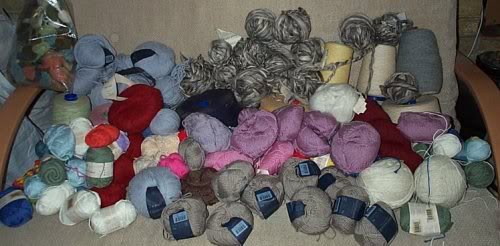
Natural Yarns vs Synthetic Yarns...Which to Use?
Natural yarns vs synthetic yarns...which to use, may seem like an odd question, especially to the experienced knitter who undoubtedly has used all kinds of yarn. But new knitters (and crocheters) are born everyday, most needing an answer to the question of natural yarns vs synthetic yarns...which to use.
So, with the hope of helping some nervous newbies (and maybe a few of us jittery old hanks), I offer my modest little site. Below are pros and cons to both and more!
sheep
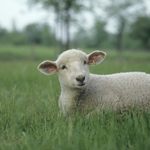
NATURAL YARNS: Let's start by categorizing our natural yarns. We will separate them into two simple groups, Animal fibers and Plant fibers.
Animal: Wool, Alpaca, Silk, Camel, Mohair, Cashmere, Quiviot, and Angora are the most widely known. The advantages of animal fibers are numerous, especially wool.
If your looking for a warm, outer garment that will be with you for many years to come, nothing beats wool. God designed it to keep sheep and goats warm in the most brutally cold climates, and it does the same for us. Sweaters and ponchos can be made from some of the rougher textured wools, as they won't be directly against the skin. Even wet, wool will retain body heat. Ideal for socks (particularly for hikers, fishermen, hunters, and any number of winter outdoor activities), hats (something like 80% of our body warmth leaves via the old noggin!), mufflers, scarves and mittens. Wool also has the ability to stretch. This can be both a pro and con, depending on the situation. The price range is wide, but one 100 gr skein of worsted or heavy worsted can easily make a hat or a pair of mittens.
The alpaca is a medium pack-animal used in the mountains of South America, and becoming more readily available with a modestly high price range. Garments made of this will wear like steel, but feel like a cozy hug. Sweaters, scarves, vests, hats and shawls are the most common items made of alpaca. It is most commonly found in lace weight to DK weight.
Silk comes in a variety of types and can be used to produce some beautiful garments. The texture and the way it moves on the needles can take some getting used to.
The rest of the animal fibers tend toward the extravagrant (although mohair/wool blends are very affordable and still feel special). Angora's probably being the most expensive and most difficult to keep looking well over time (and wear). It's used most commonly as an accent for hats and mittens and is sold in 10gr balls.
Cons on the animal fibers vary. More care is needed in the cleaning and storage of items, although there are some nice washable wool yarns. There is also the question of allergies. If you are unsure of possible allergic reactions, start out with a small project, with one skein. If you have no reactions while working it, you should be okay. And if planning a gift for someone else, try to find out if they're allergic before making the item!
cotton field
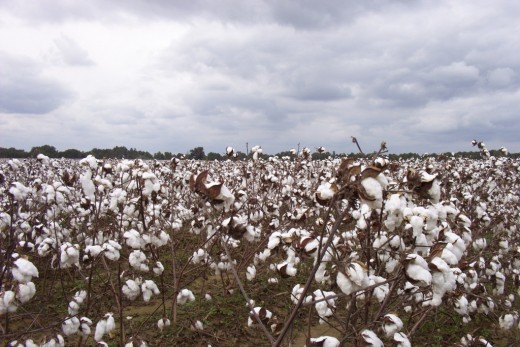
Natural Yarns- Plant Fibers
Now on to the plant fibers. Most folks could probably name 2 or 3 plant fibers off-hand, but boy oh boy, are there some wonderfully different plant fibers out there to work with!
The most common are Cotton and Linen. But what's this? Bamboo? Corn? Soy? And of course Hemp.
Cotton is the everyman's fiber. It has the wonderful ability to wick away moisture, which makes it perfect for warm weather clothing. It tends to get softer with wear, is used for items from dishclothes, rugs, bags, hats, sweaters, shawls, socks and whatever your imagination tells you.
Linen can be a bit more challenging to work with as it is somewhat slippery on the needles, but worth the effort.
The others I must confess to never having worked with...yet! But I can hardly wait to try the corn!
And now the cons of these plant fibers. They do not stretch. Or more accurately, if they are stretched without ripping, they don't have the ability to bounce back to their original shape. And they can be on the expensive side. But again, if it's something worth putting your time and effort into, it's worth buying quality.
A Synthetic Rainbow
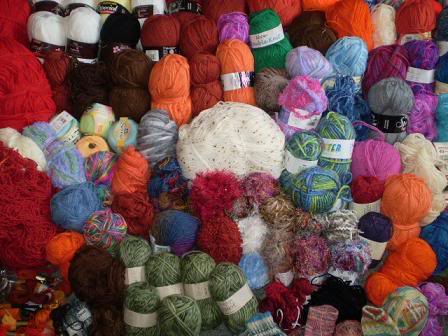
Synthetic Yarns
And here we are at the synthetics. There is such a wide variety of acrylics, orlons, nylons, olefin, etc. that I'm not going to be able to cover them all. So for the sake of space ( and my sanity!), I will give a rather broadview of them.
Among the pros of synthetics is the wide variety and just as wide of a price range. There are so many novelty yarns on the market today that even those of us (ahem) with very little imagination, can produce some of the wildest, incredibly beautiful works of art.
Many synthetics are very easy care, BUT NOT ALL ARE! It is so very important to read, read, read the label of any yarn you plan on purchasing or using. Stop and think of the article you'll be making, who it's for or how it will be used. Is it practical to make a baby's bib out of a dry clean only yarn? If it's a gift, will the giftee end up with an albatross that they feel obligated to keep and upkeep so as to spare the gifter's feelings? Hard learned lessons, though I never made a bib out of dry clean only...it was a baby sweater, and just as impractical.
The other major advantage of (most) synthetics is durability. Clothing items for children should be able to be passed down for many years, with modest care.
The cons of synthetics: Many have no elasticity and so once an item is stretched out, it's stretched out. Hats and mittens aren't quite as good in retaining warmth, especially when wet. And one problem that hopefully none of us will have to experience, if ever you find yourself in a fire, synthetics adhere to the flesh and burns, whereas natural fibers will burn, but burn off cleanly.
A Parting Word...
I hope this little site has helped you understand something of all the choices that are out there. I think of how blessed we are to have such an incredible palette of yarn types, textures and colors to choose from, and am so thankful that my mother took the time to teach her 8 year old to knit so very many years ago.

